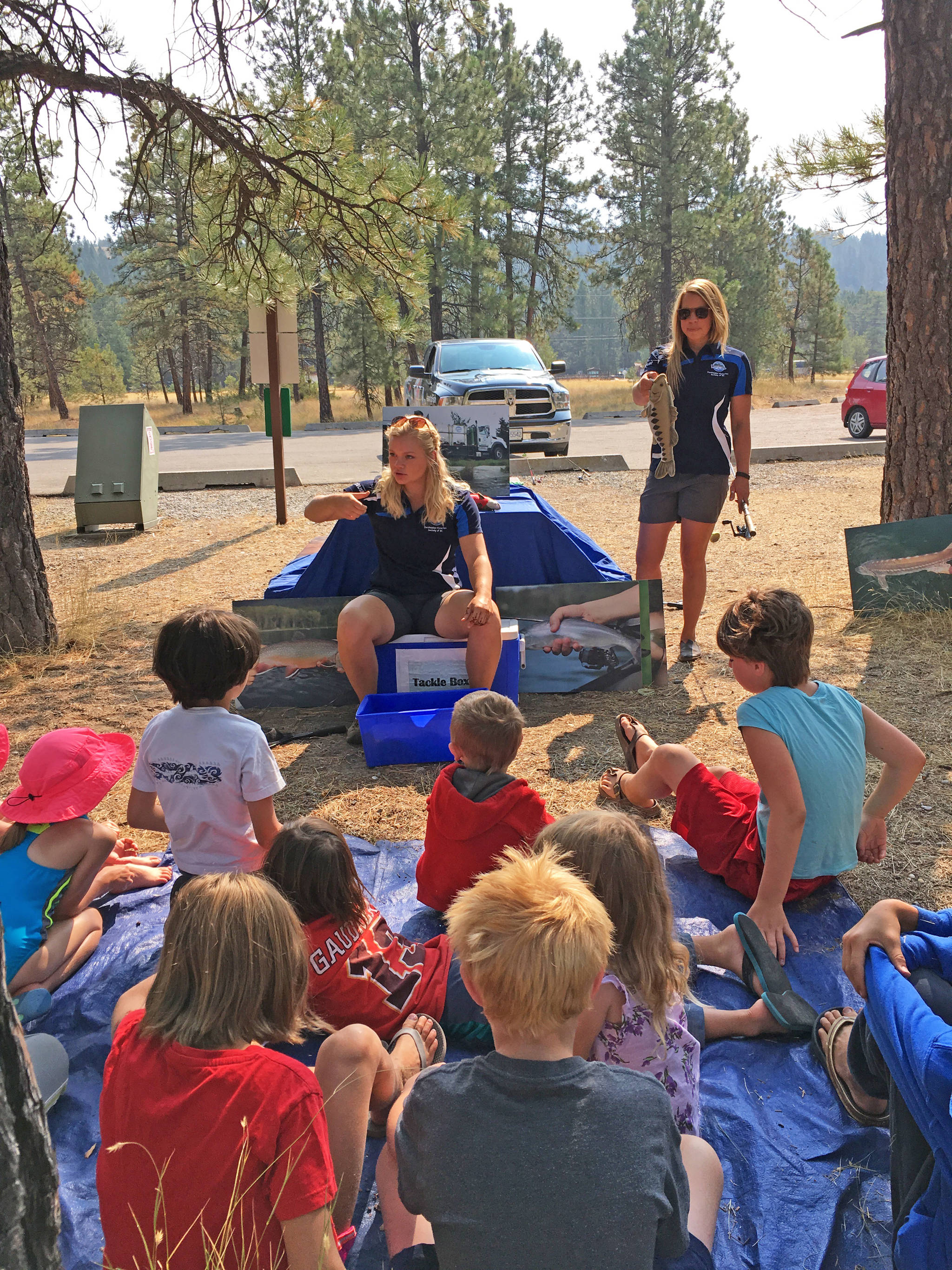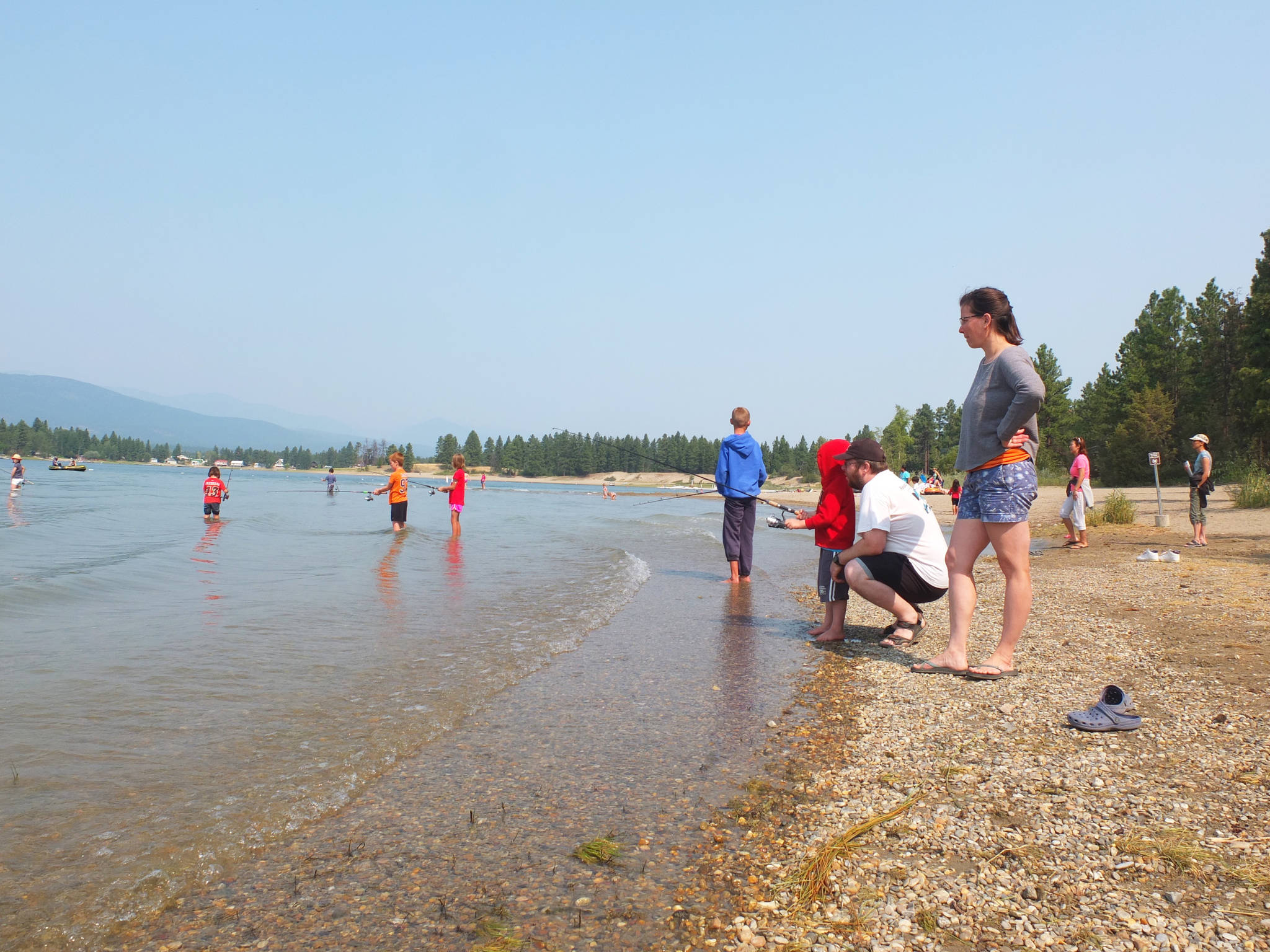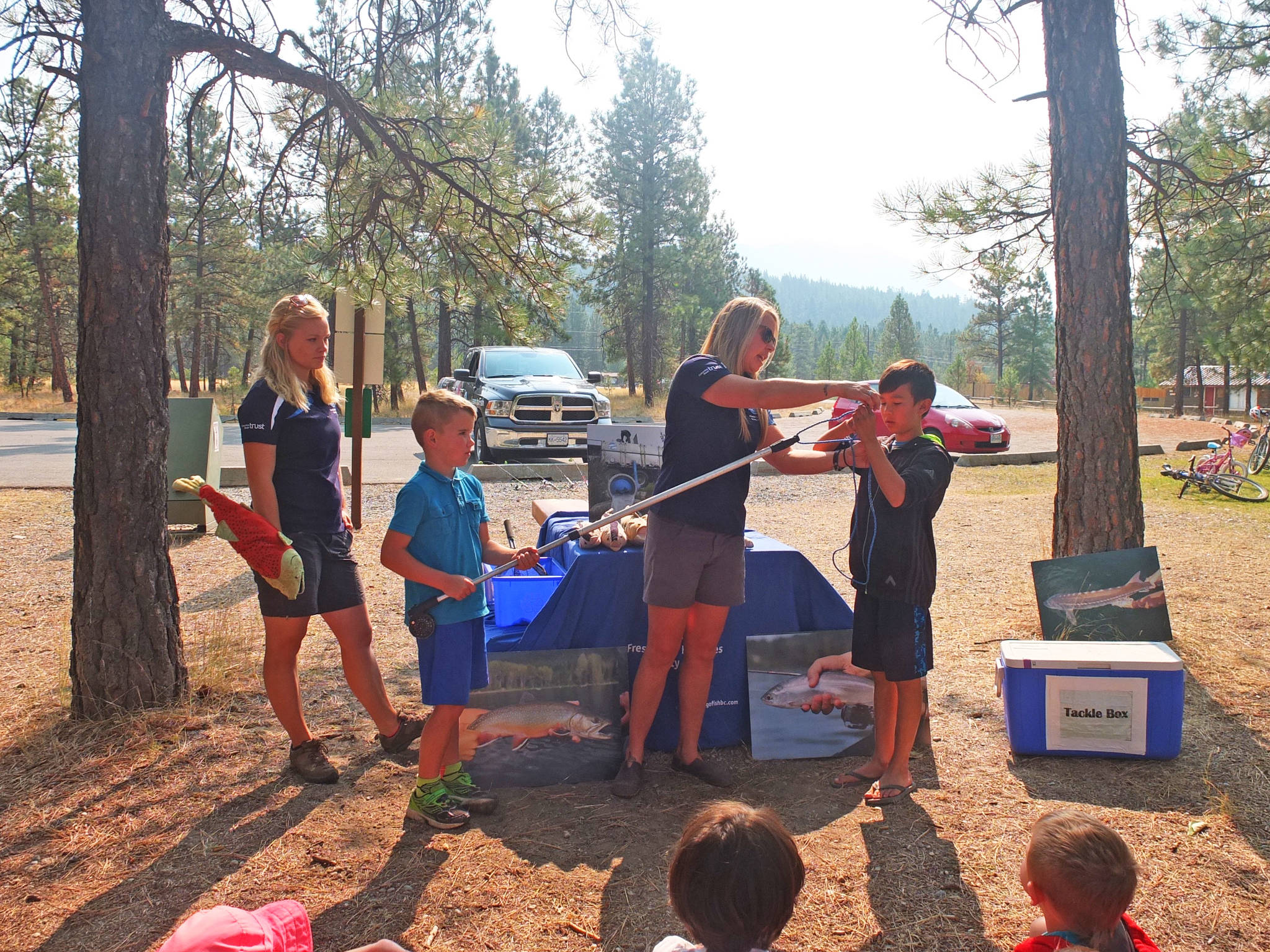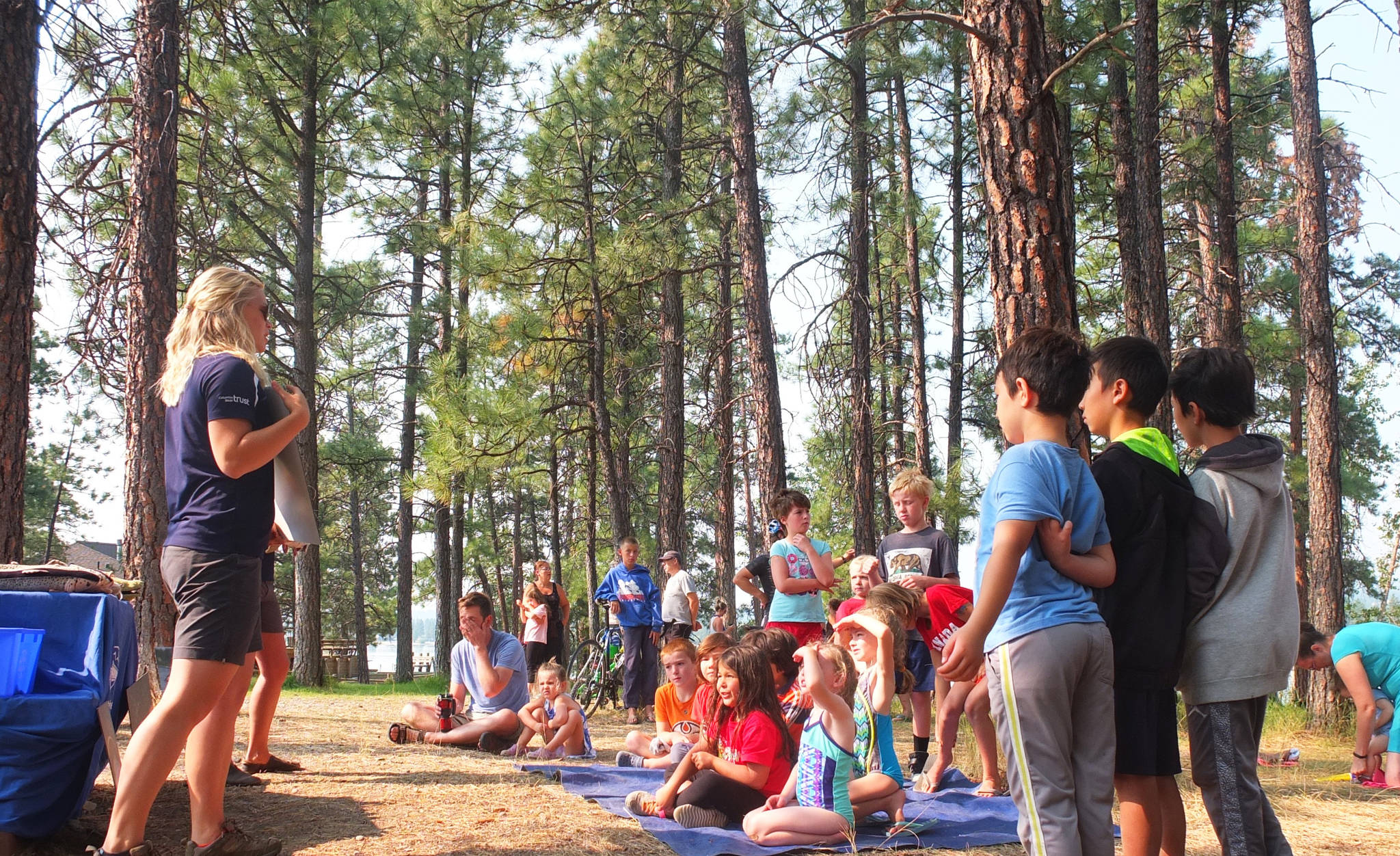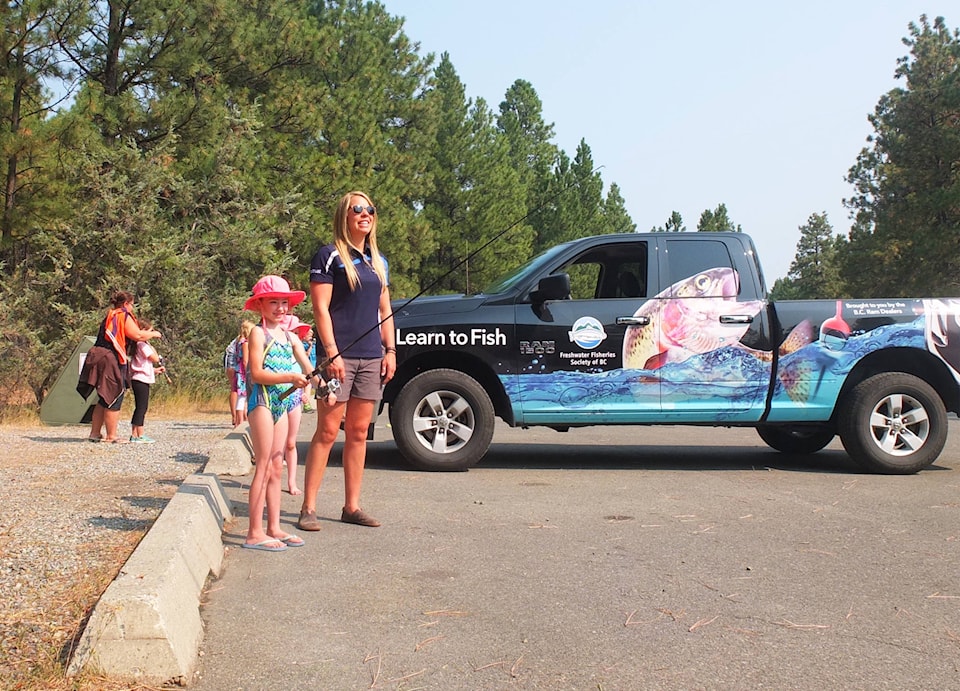The Freshwater Fisheries Society of BC is a private non-profit organization that works to enhance and conserve BC’s freshwater fisheries for public benefit, by working in partnership with the government, industry and anglers.
The Society offers free educational programs for youth throughout British Columbia. In 2007 the Society introduced the Learn to Fish program at their hatcheries, and have since developed off-site programming, six days per week, at various locations throughout the province.
The Society owns and operates six major fish hatcheries that are located in Fort Steele, Duncan, Abbotsford, Summerland, Clearwater and Vanderhoof.
Locally, the Learn to Fish program is offered at Wasa Lake as well as Idlewild and Jim Smith Lakes, which are close to Cranbrook.
As the Freshwater Fisheries Society of BC website states, “every year, the hatcheries raise and release over eight million trout, char and kokanee salmon into 800 lakes around the province. We also manage special recovery programs for endangered species such as white sturgeon in the Columbia and Nechako Rivers. Most of our hatcheries welcome visitors and offer self-guided tours.”
With the Learn to Fish program, children ages 5 and older, with accompanying adults, meet at a lake, rain or shine, to learn how to fish. During the two hour session, children learn the basics of freshwater fishing including hatchery roles, fish identification, tackle, rod rigging, casting and hands-on fishing.
Senior Outreach Coordinator for
the Freshwater Fisheries Society of BC, Shealo Blackwell says that usually 20 to 50 children participate in the free parks programs that are offered daily throughout East and West Kootenay and other parts of the province.
“At the hatchery [Fort Steele] we typically see 50 to 90 kids per day, especially on the weekends,” said Blackwell. “The off-site program is offered daily at different locations, while the private pond at the hatchery is open during the hours of daylight where children can learn to fish, without needing to purchase a fishing license.”
With the Learn to Fish program, children learn under Blackwell and her colleague’s fishing licenses.
“The goal of the Learn to Fish program is to not only get youth interested and involved in fishing but also to identify and meet all of the rules,” Blackwell said. “It ensures that children, and their parents, are educated in how to properly handle fish, learn about invasive species and the implications associated with moving fish to other lakes and learn about the role of the hatchery etc..”
Every spring during the school year, the Society offers programming through the hatchery to grades two through seven, and some children as young as age two get the opportunity to learn about fish in BC as well.
“The original inspiration behind the Learn to Fish program was to introduce angling to youth throughout the province,” said Blackwell. “Specifically, in 2007, they noticed a decline in the purchasing of fishing licences; with the internet and electronics being factors. So they developed a fully curriculum based format, with staff and teachers in BC, to get kids outside and interested in fishing.”
The society also offers programming geared specifically for youth aged 10 to 15.
“We introduce them to fly fishing and get them excited about it so there’s always that hobby and interest,” Blackwell said. “At 16 youth are required to purchase a fishing license so it’s good to get them started.”
For example, Blackwell just taught the Youth on the Fly program on August, 5 where youth ages 12 to 15 spend most of the day at the hatchery’s fishing pond learning to fly fish, and get the opportunity to test their skills on the Bull River in the afternoon. Lunch and dinner, along with fishing equipment, is provided at a cost of $75 with a $25 deposit. The Youth on the Fly Program is the only program that isn’t free; the cost being associated with meals and transportation.
For families who want to try out fishing but don’t have the equipment, the Society also offers a rod loan program to get you started.
“This unique program allows families and other groups to try fishing without having to purchase gear,” says the Society’s website. “At no cost, you and your family can borrow spinning rods with reels and a basic box of tackle.”
The free programming is made possible through sponsors including the Habitat Conservation Trust Foundation, Columbia Basin Trust Fund, Rapala, BC Ram Dealers, the Province of British Columbia, BC Parks and Yamaha Motor Canada.
For more information about programming, rod loan locations, hatcheries, fish conservation, how and where to fish and much more, visit the Freshwater Fisheries Society of BC’s website at www.gofishbc.com.
corey.bullock@kimberleybulletin.com
